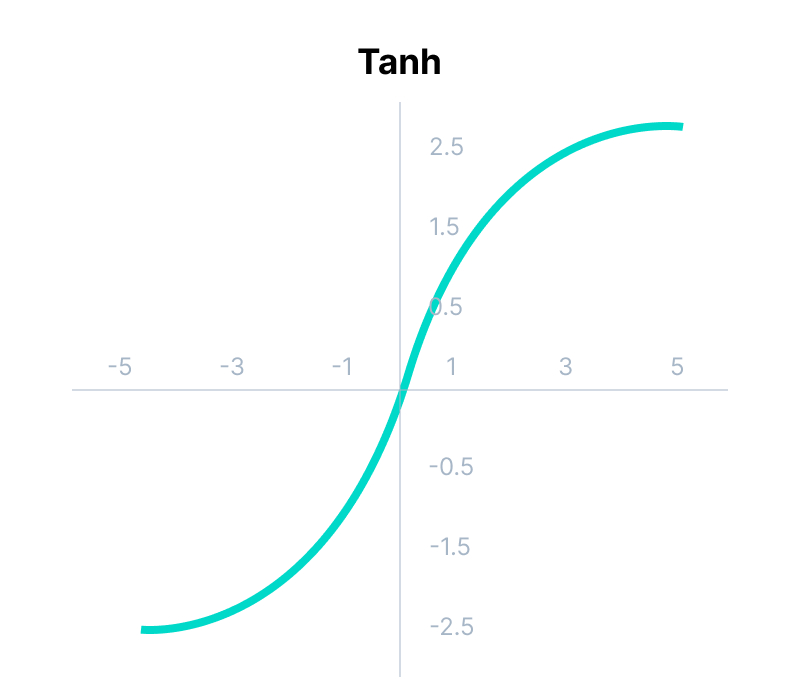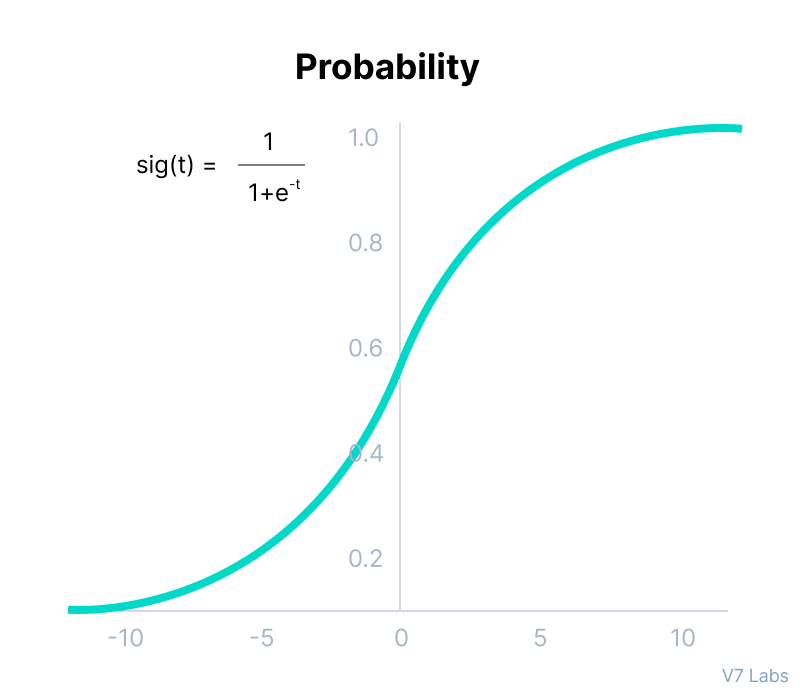12 Types of Neural Networks Activation Functions: Howto Choose?
What is a Neural Network Activation Function?
Why do Neural Networks Need an Activation Function?
Why do Neural Networks need it?
Well, the purpose of an activation function is to add non-linearity to the neural network.
Binary Step Function
The binary step function depends on a threshold value that decides whether a neuron should be activated or not.
The input fed to the activation function is compared to a certain threshold; if the input is greater than it, then the neuron is activated, else it is deactivated, meaning that its output is not passed on to the next hidden layer.
Mathematically it can be represented as:
.png)
Here are some of the limitations of the binary step function:
Sigmoid / Logistic Activation Function
The larger the input (more positive), the closer the output value will be to 1.0, whereas the smaller the input (more negative), the closer the output will be to 0.0, as shown below.
.jpg)
Mathematically it can be represented as:
.png)
Here’s why sigmoid/logistic activation function is one of the most widely used functions:
The limitations of sigmoid function are discussed below:
.jpg)
As we can see from the above Figure, the gradient values are only significant for range -3 to 3, and the graph gets much flatter in other regions.
It implies that for values greater than 3 or less than -3, the function will have very small gradients. As the gradient value approaches zero, the network ceases to learn and suffers from the Vanishing gradient problem.
Tanh Function (Hyperbolic Tangent)
Tanh function is very similar to the sigmoid/logistic activation function, and even has the same S-shape with the difference in output range of -1 to 1. In Tanh, the larger the input (more positive), the closer the output value will be to 1.0, whereas the smaller the input (more negative), the closer the output will be to -1.0.

Mathematically it can be represented as:
.png)
Advantages of using this activation function are:
Have a look at the gradient of the tanh activation function to understand its limitations.
.jpg)
As you can see— it also faces the problem of vanishing gradients similar to the sigmoid activation function. Plus the gradient of the tanh function is much steeper as compared to the sigmoid function.
💡 Note: Although both sigmoid and tanh face vanishing gradient issue, tanh is zero centered, and the gradients are not restricted to move in a certain direction. Therefore, in practice, tanh nonlinearity is always preferred to sigmoid nonlinearity.
ReLU Function
ReLU stands for Rectified Linear Unit.
Although it gives an impression of a linear function, ReLU has a derivative function and allows for backpropagation while simultaneously making it computationally efficient.
The main catch here is that the ReLU function does not activate all the neurons at the same time.
The neurons will only be deactivated if the output of the linear transformation is less than 0.

Mathematically it can be represented as:
.png)
The advantages of using ReLU as an activation function are as follows:
The limitations faced by this function are:
.jpg)
The negative side of the graph makes the gradient value zero. Due to this reason, during the backpropagation process, the weights and biases for some neurons are not updated. This can create dead neurons which never get activated.
Leaky ReLU Function
.jpg)
Mathematically it can be represented as:
.png)
The advantages of Leaky ReLU are same as that of ReLU, in addition to the fact that it does enable backpropagation, even for negative input values.
By making this minor modification for negative input values, the gradient of the left side of the graph comes out to be a non-zero value. Therefore, we would no longer encounter dead neurons in that region.
Here is the derivative of the Leaky ReLU function.
.jpg)
The limitations that this function faces include:
Parametric ReLU Function
Parametric ReLU is another variant of ReLU that aims to solve the problem of gradient’s becoming zero for the left half of the axis.
This function provides the slope of the negative part of the function as an argument a. By performing backpropagation, the most appropriate value of a is learnt.
.jpg)
Mathematically it can be represented as:
.png)
Where "a" is the slope parameter for negative values.
The parameterized ReLU function is used when the leaky ReLU function still fails at solving the problem of dead neurons, and the relevant information is not successfully passed to the next layer.
This function’s limitation is that it may perform differently for different problems depending upon the value of slope parameter a.
Exponential Linear Units (ELUs) Function
Exponential Linear Unit, or ELU for short, is also a variant of ReLU that modifies the slope of the negative part of the function.
ELU uses a log curve to define the negativ values unlike the leaky ReLU and Parametric ReLU functions with a straight line.
.jpg)
Mathematically it can be represented as:
.png)
ELU is a strong alternative for f ReLU because of the following advantages:
The limitations of the ELU function are as follow:
.jpg)
Mathematically it can be represented as:
.png)
Softmax Function
Before exploring the ins and outs of the Softmax activation function, we should focus on its building block—the sigmoid/logistic activation function that works on calculating probability values.

The output of the sigmoid function was in the range of 0 to 1, which can be thought of as probability.
But—
This function faces certain problems.
Let’s suppose we have five output values of 0.8, 0.9, 0.7, 0.8, and 0.6, respectively. How can we move forward with it?
The answer is: We can’t.
The above values don’t make sense as the sum of all the classes/output probabilities should be equal to 1.
You see, the Softmax function is described as a combination of multiple sigmoids.
It calculates the relative probabilities. Similar to the sigmoid/logistic activation function, the SoftMax function returns the probability of each class.
It is most commonly used as an activation function for the last layer of the neural network in the case of multi-class classification.
Mathematically it can be represented as:
.jpg)
Let’s go over a simple example together.
Assume that you have three classes, meaning that there would be three neurons in the output layer. Now, suppose that your output from the neurons is [1.8, 0.9, 0.68].
Applying the softmax function over these values to give a probabilistic view will result in the following outcome: [0.58, 0.23, 0.19].
The function returns 1 for the largest probability index while it returns 0 for the other two array indexes. Here, giving full weight to index 0 and no weight to index 1 and index 2. So the output would be the class corresponding to the 1st neuron(index 0) out of three.
You can see now how softmax activation function make things easy for multi-class classification problems.



Comments
Post a Comment